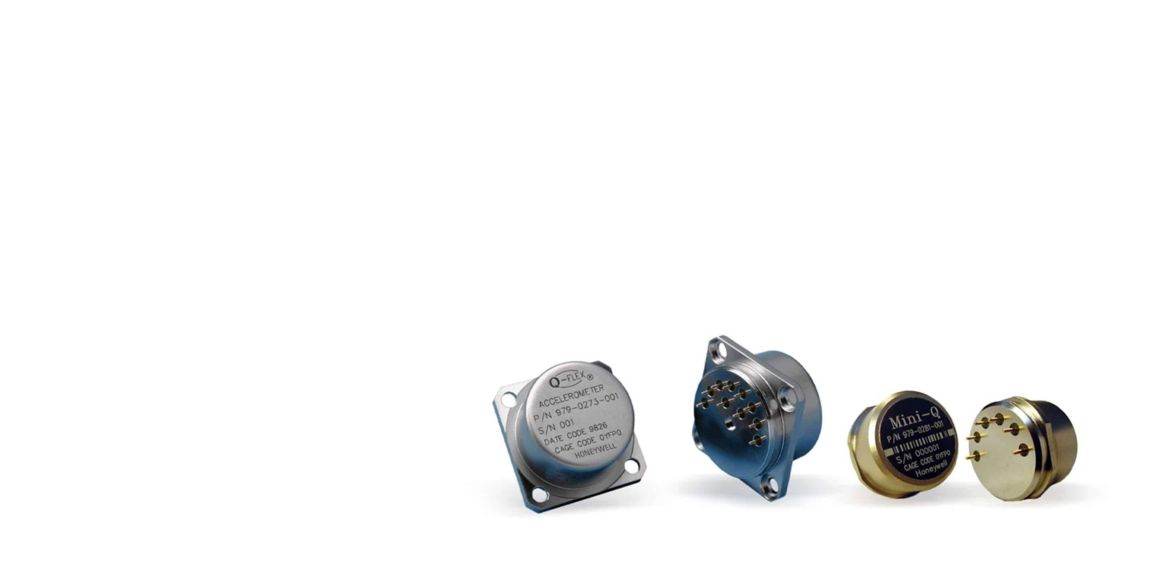QAT and Mini Q Energy Accelerometers

Honeywell’s Q-Flex design is ruggedized for high temperature and specifically customized for the demands of oil and gas applications. QAT and Mini Q products feature a patented Q-Flex etched-quartz-flexure seismic system and its amorphous quartz proof-mass structure provides excellent bias, scale factor and axis alignment stability.
The integral Q-Flex electronics develop an acceleration-proportional output current providing both static and dynamic acceleration measurements. By use of a customer-supplied output load resistor, appropriately scaled for the acceleration range of the application, the output current can be converted into a voltage.
Specifications
Physical
Weight
- 25 grams (Mini Q)
- 55 grams (QAT)
Size
- 0.79in Diameter (2 cm) x 0.57in High (1.4 cm) millimetre
- 1.0in Diameter (2.5 cm) x 0.73in High (1.9 cm) millimetre
Performance
Vibration Rectification
- < ± 100 µg/ g^2 (QAT)
Vibration Peak Sine
- 30g peak, 50 to 800Hz (QAT)
Shock
- 1000 g (Mini Q) (Operating)
- 1000 g (QAT) (Operating)
- 2000 g (Mini Q) [Survival (-40 to 70°)]
- 2000 g (QAT) [Survival (-40 to 70°)]
Scale Factor
- 1.3 mA/g (Mini Q)
- 2.75 mA/g ± 1.8% (QAT)
Resolution/Threshold
- <1 µg (Mini Q)
- <5 µg (QAT)
Models
- MiniQ 150
- MiniQ 185
- QAT 160
- QAT 185
Key Benefits
- Low-power electronics
- Temperature-compensating algorithms dramatically improve bias, scale factor, and axis misalignment performance
Bias - Residual Modeling Error
- <450 μg (QAT)
- <600 μg (Mini Q)
Bias
- <15 mg (Mini Q)
- <20 mg (QAT)
Bandwidth
- <200 Hz (QAT)
Connectivity and Systems
Vibration (Random)
- 20 grms (QAT)
- 30 grms (Mini Q)
Scale Factor - Residual Modeling Error
- <400 ppm (Mini Q)
- <450 ppm (QAT)
RSS Bias and Scale Factor - One-Year Repeatability
- 1.5mg (QAT 185)
- 1.8mg (MiniQ 150)
- 1.8mg (MiniQ 185)
- 1.8mg (MiniQ 200)
- 1mg (QAT 160)
Output
- Analog
Environmental
Survival Temperatures
- -40°C to 175°C (QAT 160)
- -40°C to 200°C (QAT 185)
- -40°C to 215°C (MiniQ 150)
- -40°C to 215°C (MiniQ 185)
- -40°C to 215°C (MiniQ 200)
Power and Electrical
Quiescent Power
- 180m Watts (QAT)
Quiescent Current per Supply
- 6 mA (QAT)
Input Voltage
- ± 12 to ± 18 VDC (Mini Q) voltage alternating current
- ± 12.5 to ± 15.5 VDC (QAT) voltage alternating current
Input Range
- ±20 g (Mini Q)
- ±20 g (QAT)
Mechanical
Operating Temperature
- 0 to 150°C (MiniQ 150)
- 0 to 160°C (QAT 160)
- 0 to 185°C (MiniQ 185)
- 0 to 200°C (MiniQ 200)
- 0°C to 185°C (QAT 185)
Axis Misalignment - One-year Composite Repeatability
- <400 µrad (QAT)
Axis Misalignment
- <3 mrad (QAT)
- <6.5 mrad (Mini Q)

